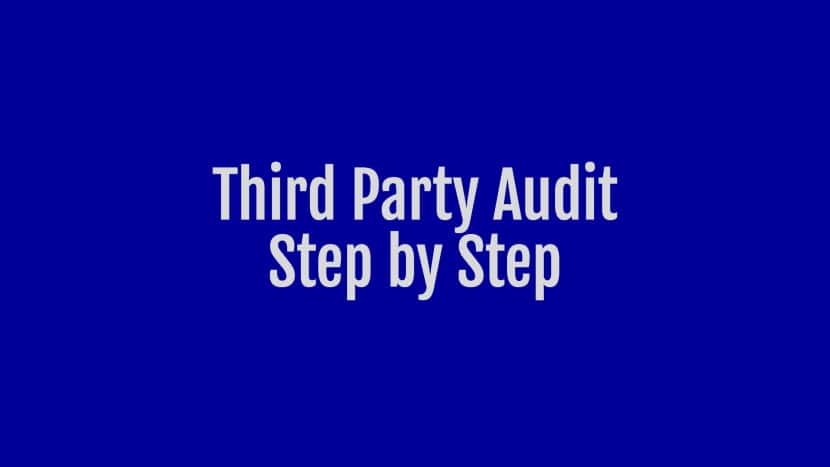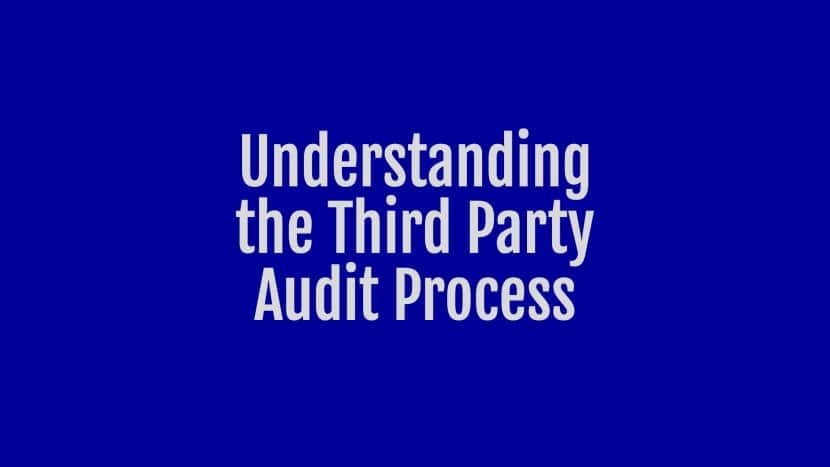Introduction
Organizations often rely on third-party vendors to provide various goods and services in today’s interconnected business landscape. While outsourcing certain tasks can be beneficial, it also introduces potential risks and vulnerabilities. This is where third party audit requirements come into play.
Third party audit requirements refer to the set of criteria and standards that organizations must meet when engaging with external vendors. These requirements are designed to ensure that vendors adhere to specific regulations, industry standards, and best practices. By meeting these requirements, organizations can mitigate risks, maintain compliance, and safeguard their reputation.
Meeting third party audit requirements is of paramount importance for businesses across all industries. Failure to comply with these requirements can result in severe consequences, such as legal penalties, financial losses, and damage to the organization’s brand image. Therefore, it is crucial for organizations to have a clear understanding of these requirements and implement robust processes to meet them.
In this article, we will delve deeper into the concept of third party audit requirements. We will explore the components of a vendor audit checklist, discuss the third party audit process, highlight the benefits of conducting third party audits, and provide best practices for successful vendor audits.
Understanding Third Party Audit Requirements
Third party audit requirements encompass a wide range of criteria that organizations must consider when engaging with external vendors. These requirements can vary depending on the industry, regulatory environment, and specific needs of the organization. Some common types of third party audit requirements include:
| Type of Third Party Audit Requirement | Description |
|---|---|
| Compliance with Regulatory Standards | Organizations may be required to ensure that their vendors comply with specific regulations, such as data protection laws, industry-specific guidelines, or environmental regulations. |
| Security and Privacy Measures | Vendors may need to demonstrate that they have robust security measures in place to protect sensitive data and maintain the privacy of customers. |
| Quality Control and Assurance | Organizations may require vendors to adhere to certain quality control standards to ensure that the products or services provided meet the desired level of quality. |
| Financial Stability | Organizations may assess the financial stability of their vendors to ensure that they can fulfill their contractual obligations and mitigate the risk of business disruption. |
It is essential for organizations to identify the specific third party audit requirements that are relevant to their industry and business operations. By understanding these requirements, organizations can establish effective vendor management processes and mitigate potential risks.
Understanding Third Party Audit Requirements
Third party audit requirements entail a set of criteria and standards that organizations must adhere to when engaging with external vendors. These requirements are put in place to ensure that vendors meet specific regulations, industry standards, and best practices. By complying with these requirements, organizations can mitigate risks, maintain compliance, and protect their reputation.
There are several common types of third party audit requirements that organizations should be aware of:
1. Compliance with Regulatory Standards
One of the primary aspects of third party audit requirements is ensuring compliance with regulatory standards. Different industries have specific regulations that vendors must adhere to. For example, in the healthcare industry, vendors may need to comply with HIPAA (Health Insurance Portability and Accountability Act) regulations to protect patient data. Similarly, in the financial sector, vendors may need to comply with regulations such as the Payment Card Industry Data Security Standard (PCI DSS) to ensure the security of financial transactions.
2. Security and Privacy Measures
Security and privacy are critical considerations when engaging with third-party vendors. Organizations must ensure that vendors have robust security measures in place to protect sensitive data and maintain the privacy of customers. This may include implementing encryption protocols, access controls, and regular security assessments. Failure to meet these requirements can result in data breaches, reputational damage, and legal consequences.
3. Quality Control and Assurance
Quality control and assurance are essential aspects of third party audit requirements, particularly in industries where product quality is crucial. Organizations may require vendors to adhere to specific quality control standards to ensure that the products or services provided meet the desired level of quality. This may involve conducting regular inspections, audits, and performance evaluations to assess the vendor’s ability to consistently deliver high-quality products or services.
4. Financial Stability
Financial stability is another important consideration when engaging with third-party vendors. Organizations need to assess the financial health and stability of their vendors to ensure that they can fulfill their contractual obligations. This helps mitigate the risk of business disruption due to vendor bankruptcy or financial instability. Conducting financial due diligence and monitoring the vendor’s financial performance can provide valuable insights into their ability to meet contractual obligations.
It is worth noting that the specific third party audit requirements can vary across industries. For example:
| Industry | Specific Third Party Audit Requirements |
|---|---|
| Food and Beverage | Adherence to food safety regulations, such as Hazard Analysis and Critical Control Points (HACCP) standards |
| Information Technology | Compliance with cybersecurity standards, such as ISO 27001 or NIST Cybersecurity Framework |
| Manufacturing | Implementation of quality management systems, such as ISO 9001 |
| Pharmaceutical | Compliance with Good Manufacturing Practices (GMP) and regulatory requirements |
These examples highlight the industry-specific nature of third party audit requirements. Organizations operating in these industries must be aware of the specific regulations and standards that apply to their vendors.
Vendor Audit Checklist
Having a comprehensive vendor audit checklist is crucial for organizations to ensure that their vendors meet the necessary requirements and standards. A vendor audit checklist serves as a systematic guide to assess and evaluate vendors, helping organizations identify potential risks and areas for improvement.
Importance of Having a Vendor Audit Checklist
A vendor audit checklist provides several benefits for organizations:
- Risk Mitigation: A well-designed vendor audit checklist helps identify potential risks associated with vendors, such as compliance violations, security vulnerabilities, or financial instability. By conducting regular audits using the checklist, organizations can proactively address these risks and take appropriate measures to mitigate them.
- Compliance Assurance: Compliance with regulatory standards and industry-specific requirements is a critical aspect of vendor management. A vendor audit checklist ensures that vendors adhere to these standards, reducing the risk of non-compliance and associated penalties.
- Quality Control: A checklist enables organizations to assess the quality of products or services provided by vendors. By evaluating factors such as product specifications, performance, and customer satisfaction, organizations can ensure that vendors consistently deliver high-quality outputs.
- Efficiency and Consistency: A standardized vendor audit checklist promotes consistency and efficiency in the audit process. It ensures that all relevant aspects are evaluated consistently across different vendors, making it easier to compare and benchmark their performance.
Components of a Comprehensive Vendor Audit Checklist
A comprehensive vendor audit checklist should cover various aspects of vendor management. Here are some essential components to include:
| Component | Description |
|---|---|
| Vendor Information | Collect basic information about the vendor, such as contact details, legal documentation, and financial stability. |
| Compliance and Regulatory Requirements | Evaluate the vendor’s compliance with relevant regulations, industry standards, and contractual obligations. |
| Security and Data Protection | Assess the vendor’s security measures, data protection policies, and incident response capabilities to ensure the safety of sensitive information. |
| Quality Control and Assurance | Examine the vendor’s quality management systems, processes, and performance metrics to ensure consistent delivery of high-quality products or services. |
| Financial Stability | Review the vendor’s financial statements, creditworthiness, and insurance coverage to assess their financial stability and ability to meet contractual obligations. |
| Contractual and Legal Compliance | Verify that the vendor’s contracts, licenses, and agreements are valid, up-to-date, and comply with legal requirements. |
These are just some of the components that can be included in a vendor audit checklist. The specific components may vary depending on the industry, nature of the vendor relationship, and organizational requirements.
Best Practices for Creating a Vendor Audit Checklist
When creating a vendor audit checklist, it is essential to follow best practices to ensure its effectiveness and relevance. Here are some tips:
- Collaboration: Involve relevant stakeholders, such as procurement, legal, IT, and compliance teams, in the development of the checklist. This ensures that all critical aspects are considered and that the checklist aligns with organizational goals and requirements.
- Clear and Measurable Criteria: Define clear and measurable criteria for each component of the checklist. This helps auditors evaluate vendors consistently and objectively.
- Regular Review and Updates: Vendor audit checklists should be reviewed periodically to ensure their relevance and effectiveness. As regulations and industry standards evolve, the checklist should be updated accordingly.
- Documentation and Record-Keeping: Maintain proper documentation of audit findings, corrective actions, and vendor responses. This documentation serves as evidence of compliance and can be valuable during future audits or vendor evaluations.








